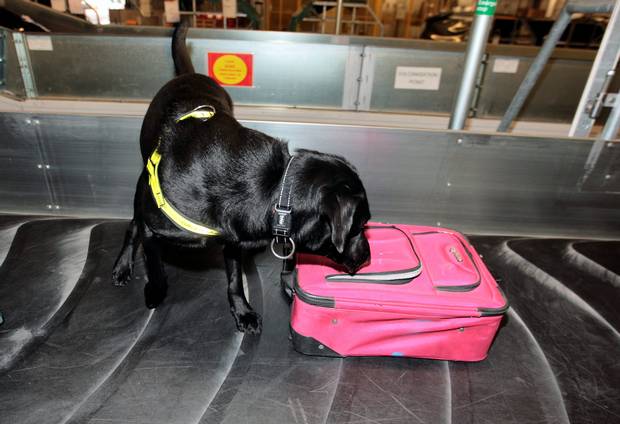
[iframe id=”https://www.youtube.com/embed/I8P80A8vy9I”]
There’s no limit to the amount of cash that travelers can bring in or take out of the United States, but it’s hard to fathom why anyone would want to carry thousands of dollars in cash on their person when credit cards and check are a bit safer. Whatever their motives, travelers are required to declare amounts above $10,000 to customs officials.If they try to smuggle in larger amounts, they run the risk of having the money seized and be faced with criminal charges. If they can’t explain where all that money came from without making themselves look guilty of drug dealing, tax evasion or money laundering, they can’t keep it.
Less than 2% can explain. Ruh Roh.
So imagine a chap traveling from Qatar to LaGuardia and telling U.S. officials that he’s got $8,000. The problem is that a Money Sniffer Dog on duty says otherwise, and she won’t let it go.
Money Sniffer Dogs.
Huh?
Money sniffing dogs are trained to detect the specific ink used in printing paper money. The exact composition of legal tender, including the formula for ink, is a closely guarded secret, but these dogs can sniff out bundles containing hundreds or more of individual notes (no one cares about the smaller number of bills most of us carry around). U.S. currency is printed on cotton/linen fiber instead of wood fiber used for paper, and it will have the scent of the people who’ve handled it. Training dogs to detect cash is a lot trickier than training a dog to detect drugs or bombs because money has an abundance of smells from a whole lot of people.
Most “money sniffers” are Labrador Retrievers not only because the breed is less threatening to the public than some other breeds, but also because as hunting dogs, Labs have a strong drive to sniff out prey, whether it’s a bird, cocaine, or cash. In the UK, about 25 customs sniffer dogs have been trained to detect currency ink, while as of 2012, some 50 currency dogs helped U.S. Customs and Border Protection agents seize over $40 million in cash leaving the United States. Also in 2012, a currency dog found $50,000 in a package destined for Haiti. When investigators searched the sender’s house, they found nearly $256,000 stashed in boxes and bags. Oops.
Sniffer dogs, however, may soon find themselves out of a job. The Bulk Currency Detection System unrolled in 2014 was expected to cost less than training a single dog. The machine will sample the air in search of the unique chemical profile of money. Harumph. The Bulk Currency Detection System doesn’t have a cold wet nose and be glad to see you. Just saying.
